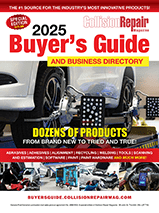HOUSTON–(BUSINESS WIRE)–#OEC–Orion Engineered Carbons S.A. (NYSE: OEC), a global supplier of specialty and high-performance carbon black, today announced financial results for the full year and fourth quarter of 2021.
Full Year 2021 Highlights
- Delivered second highest adjusted EBITDA
- Continued strong performance in our Specialty and Rubber businesses, despite disruptions to the global economy
- Advanced key investments: U.S. emissions controls, Ravenna expansion, and second plant in China
- Reinstated dividend at a level that enhances shareholder returns without impeding continued growth investments
- Net sales of $1,546.8 million, up $410.4 million, year over year
- Net income of $134.7 million, up $116.5 million, year over year
- Basic EPS of $2.22, up $1.92, year over year
- Adjusted EPS1 of $1.73, up $0.69, year over year
- Adjusted EBITDA1 of $268.4 million, up $68.4 million, year over year
Fourth Quarter 2021 Highlights
- Net sales of $392.7 million, up $77.0 million, year over year
- Net income of $1.1 million, down $7.8 million, year over year
- Basic EPS of $0.02, down $0.13, year over year
- Adjusted EPS1 of $0.17, down $0.23, year over year
- Adjusted EBITDA1 of $52.3 million, down $13.7 million, year over year
1 The reconciliations of Non-GAAP measures to the respective most comparable GAAP measures are provided in the section titled Reconciliation of Non-GAAP to GAAP Financial Measures below.
“I would like to thank the Orion team for delivering our second highest Adjusted EBITDA, which was up 34.2 percent, year-over-year. More importantly, the team positioned us well for the future in terms of fairer pricing, product qualifications, and increased growth. While our full year performance was exceptional, fourth quarter Adjusted EBITDA was $52.3 million, down 20.8 percent, reflecting lower volume impacted by the Ivanhoe emissions controls start-up and other planned turnarounds and by supply chain disruptions. Even as COVID continues to affect global markets, I am confident that we have positioned ourselves very well in 2022,” said Corning Painter, chief executive officer.
Mr. Painter continued, “We made great progress throughout the year with our sustainability initiatives, which we believe will be powerful growth drivers for us. From a capital spending perspective, we estimate that we have $90 million in spending yet to go for our two remaining plant air emission upgrades in the U.S. where we have lump-sum, turn-key contracts with our engineering firm, significantly de-risking the projects. With the conclusion of these air emission upgrades in sight, we are well positioned to generate significant discretionary cash flow to invest in high growth projects, such as expanding acetylene black production to capture new business from the electric vehicle mega trend.”
Fourth Quarter 2021 Overview:
|
(In millions, except per share data or stated otherwise) |
|
Q4 2021 |
Q4 2020 |
Y/Y Change |
Y/Y Change in % |
|||
|
Volume (kmt) |
|
223.1 |
|
237.8 |
|
(14.7) |
|
(6.2%) |
|
Net sales |
|
392.7 |
|
315.7 |
|
77.0 |
|
24.4% |
|
Income from operations |
|
12.9 |
|
25.6 |
|
(12.7) |
|
(49.6%) |
|
Net income |
|
1.1 |
|
8.9 |
|
(7.8) |
|
(87.6%) |
|
Contribution margin |
|
125.7 |
|
139.5 |
|
(13.8) |
|
(9.9%) |
|
Contribution margin per metric ton |
|
563.4 |
|
586.6 |
|
(23.2) |
|
(4.0%) |
|
Adjusted EBITDA (1) |
|
52.3 |
|
66.0 |
|
(13.7) |
|
(20.8%) |
|
Basic EPS |
|
0.02 |
|
0.15 |
|
(0.13) |
|
(86.7%) |
|
Diluted EPS |
|
0.01 |
|
0.15 |
|
(0.14) |
|
(93.3%) |
|
Adjusted EPS(1) |
|
0.17 |
|
0.40 |
|
(0.23) |
|
(57.5%) |
|
(1) |
The reconciliations of these non-GAAP measures to the respective most comparable GAAP measures are provided in the section titled Reconciliation of Non-GAAP Financial Measures. |
Volumes decreased by 14.7 kmt, year over year, primarily due to the Ivanhoe start-up and other planned turnarounds, which prevented us from capturing the underlying market demand.
Net sales increased by $77.0 million, or 24.4%, year over year, driven primarily by the impact of passing through higher feedstock costs, partially offset by lower volume.
Income from operations decreased by $12.7 million, or 49.6%, to $12.9 million, year over year, driven primarily by lower volume, impact of unfavorable product mix, higher incentive compensation, partially offset by higher energy sales.
Net income decreased by $7.8 million, or 87.6%, to $1.1 million, year over year, driven primarily by lower volume, impact of unfavorable product mix, higher incentive compensation, partially offset by higher energy sales.
Contribution margin decreased by $13.8 million, or 9.9%, to $125.7 million, year over year, primarily due to lower volume, impact of unfavorable product mix and unfavorable impact of foreign currency translation.
Adjusted EBITDA decreased by $13.7 million, or 20.8%, to $52.3 million, year over year, primarily due to lower contribution margin and higher incentive compensation.
Quarterly Business Segment Results
|
SPECIALTY CARBON BLACK |
||||||||
|
|
|
|
|
|
|
|
|
|
|
(In millions, unless stated otherwise) |
|
Q4 2021 |
|
Q4 2020 |
|
Y/Y Change |
|
Y/Y Change in % |
|
Volume (kmt) |
|
59.8 |
|
65.4 |
|
(5.6) |
|
(8.6)% |
|
Net sales |
|
147.6 |
|
127.4 |
|
20.2 |
|
15.9% |
|
Gross profit |
|
39.6 |
|
47.7 |
|
(8.1) |
|
(17.0)% |
|
Gross profit per metric ton |
|
662.2 |
|
729.4 |
|
(67.2) |
|
(9.2)% |
|
Adjusted EBITDA |
|
30.3 |
|
39.0 |
|
(8.7) |
|
(22.3)% |
|
Adjusted EBITDA/metric ton |
|
506.7 |
|
596.3 |
|
(89.6) |
|
(15.0)% |
|
Adjusted EBITDA Margin (%) |
|
20.5% |
|
30.6% |
|
(1010)bps |
|
(33.0)% |
Specialty volumes declined by 5.6 kmt, or 8.6%, year over year, reflecting lower demand, supply chain issues and planned plant turnarounds.
Net sales rose by $20.2 million, or 15.9%, to $147.6 million, year over year, primarily driven by the impact of passing through higher feedstock costs, partially offset by lower volume, and unfavorable impact of foreign currency translation.
Specialty Adjusted EBITDA decreased by $8.7 million, or 22.3%, to $30.3 million, year over year, primarily due to lower volume and higher incentive compensation. Year over year, Adjusted EBITDA margin decreased 1,010 basis points to 20.5%.
|
RUBBER CARBON BLACK |
||||||||
|
|
|
|
|
|
|
|
|
|
|
(In millions, unless stated otherwise) |
|
Q4 2021 |
|
Q4 2020 |
|
Y/Y Change |
|
Y/Y Change in % |
|
Volume (kmt) |
|
163.3 |
|
172.4 |
|
(9.1) |
|
(5.3)% |
|
Net sales |
|
245.1 |
|
188.3 |
|
56.8 |
|
30.2% |
|
Gross profit |
|
35.7 |
|
41.3 |
|
(5.6) |
|
(13.6)% |
|
Gross profit per metric ton |
|
218.6 |
|
239.6 |
|
(21.0) |
|
(8.8)% |
|
Adjusted EBITDA |
|
22.0 |
|
27.0 |
|
(5.0) |
|
(18.5)% |
|
Adjusted EBITDA/metric ton |
|
134.7 |
|
156.6 |
|
(21.9) |
|
(14.0)% |
|
Adjusted EBITDA Margin (%) |
|
9.0% |
|
14.3% |
|
(530)bps |
|
(37.1)% |
Rubber Carbon Black volumes declined by 9.1 kmt, or 5.3%, year over year, reflecting lower demand, supply chain issues and planned plant turnarounds.
Net sales increased by $56.8 million, or 30.2%, to $245.1 million, year over year, primarily due to the impact of passing through higher feedstock costs, partially offset by lower volume, and impact of unfavorable product mix.
Rubber Adjusted EBITDA decreased by $5.0 million, or 18.5%, to $22.0 million, year over year, driven by lower volume, impact of unfavorable product mix and higher incentive compensation, partially offset by passing through of higher feedstock costs. Adjusted EBITDA margin decreased 530 basis points to 9.0%, year over year.
Balance Sheet and Cash Flows
As of December 31, 2021, the company had total liquidity of $241.6 million, including cash and equivalents of $65.7 million, $166.7 million under our revolving credit facility, including ancillary lines, and $9.2 million of capacity under other available credit lines. Net debt was $722.8 million and net leverage was 2.69x.
Cash Flow
For the twelve months ended December 31, 2021, net cash provided by operating activities was $145.2 million, an increase of $19.9 million, year over year, primarily driven by higher net income due to improved operating results and proceeds from settling the longstanding Evonik dispute, partially offset by higher working capital.
For twelve months ended December 31, 2021, net cash used in investing activities was $214.7 million, up $69.8 million, year over year, primarily driven by the timing of EPA-related capital expenditures.
For twelve months ended December 31, 2021, net cash provided by financing activities of $73.3 million, compared to cash provided by financing activities of $13.5 million in 2020, primarily reflects borrowing under our revolving credit facilities to meet our increased working capital requirements. Our financing activity included refinancing of our term loan and associated costs. Net cash provided by financing during 2020 reflects management bolstering its cash position to successfully manage through the pandemic.
Outlook
“Our Adjusted EBITDA range in 2022 is $300 million to $325 million, up over 16 percent at the mid-point, and we are initiating Adjusted EPS guidance in a range of $1.90 per share to $2.20 per share, up over 18 percent at the mid-point. This reflects the progress we have made in pricing, conductivity and our U.S. specialty business, among other things, and our confidence in the underlying demand for our materials. Factors that could impact 2022 results include supply chain disruptions, increased inflationary cost pressure, and foreign exchange rates,” concluded Mr. Painter.
Conference Call
As previously announced, Orion will hold a conference call tomorrow, Friday, February 18, 2022, at 8:30 a.m. (EDT). The dial-in details for the live conference call are as follow:
|
|
|
|
|
U.S. Toll Free: |
1-877-407-4018 |
|
|
International: |
1-201-689-8471 |
A replay of the conference call may be accessed by phone at the following numbers through February 25, 2022:
|
|
|
|
|
U.S. Toll Free: |
1-844-512-2921 |
|
|
International: |
1-412-317-6671 |
|
|
Conference ID: |
13725776 |
Additionally, an archived webcast of the conference call will be available on the Investor Relations section of the company’s website at www.orioncarbons.com.
To learn more about Orion, visit the company’s website at www.orioncarbons.com, where we regularly post information including notification of events, news, financial performance, investor presentations and webcasts, non-GAAP reconciliations, SEC filings and other information regarding our company, its businesses and the markets it serves.
About Orion Engineered Carbons
Orion Engineered Carbons (NYSE: OEC) is a leading global supplier of carbon black, a solid form of carbon produced as powder or pellets. The material is made to customers’ exacting specifications for tires, coatings, ink, batteries, plastics and numerous other specialty, high-performance applications. Carbon black is used to tint, colorize, provide reinforcement, conduct electricity, increase durability and add UV protection. Orion has innovation centers on three continents and 14 plants worldwide, offering the most diverse variety of production processes in the industry. The company’s corporate lineage goes back more than 160 years to Germany, where it operates the world’s longest-running carbon black plant. Orion is a leading innovator, applying a deep understanding of customers’ needs to deliver sustainable solutions. For more information, please visit orioncarbons.com.
Cautionary Statement for the Purposes of the “Safe Harbor” Provisions of the Private Securities Litigation Reform Act of 1995
This document contains and refers to certain forward-looking statements with respect to our financial condition, results of operations and business, including those in the “Outlook” and “Quarterly Business Segment Results” sections above. These statements constitute forward-looking statements within the meaning of Section 21E of the Securities Exchange Act of 1934, as amended (the “Exchange Act”). Forward-looking statements are statements of future expectations that are based on management’s current expectations and assumptions and involve known and unknown risks and uncertainties that could cause actual results, performance or events to differ materially from those expressed or implied in these statements. Forward-looking statements include, among others, statements concerning the potential exposure to market risks, statements expressing management’s expectations, beliefs, estimates, forecasts, projections and assumptions and statements that are not limited to statements of historical or present facts or conditions. Forward-looking statements are typically identified by words such as “anticipate,” “assume,” “assure,” “believe,” “confident,” “could,” “estimate,” “expect,” “intend,” “may,” “plan,” “objectives,” “outlook,” “probably,” “project,” “will,” “seek,” “target” “to be,” and other words of similar meaning.
These forward-looking statements include, without limitation, statements about the following matters: • our strategies for (i) mitigating the impacts of the global outbreak of the Coronavirus, (ii) strengthening our position in specialty carbon blacks and rubber carbon blacks, (iii) increasing our rubber carbon black margins and (iv) strengthening the competitiveness of our operations; • the ability to pay dividends at historical dividend levels or at all; • cash flow projections; • the installation of pollution control technology in our U.S. manufacturing facilities pursuant to the EPA consent decree described herein; • the outcome of any in-progress, pending or possible litigation or regulatory proceedings; and • our expectation that the markets we serve will continue to grow.
All these forward-looking statements are based on estimates and assumptions that, although believed to be reasonable, are inherently uncertain. Therefore, undue reliance should not be placed upon any forward-looking statements. There are important factors that could cause actual results to differ materially from those contemplated by such forward-looking statements. These factors include, among others: • the effects of the COVID-19 pandemic on our business and results of operations; • negative or uncertain worldwide economic conditions; • volatility and cyclicality in the industries in which we operate; • operational risks inherent in chemicals manufacturing, including disruptions due to technical facilities, severe weather conditions or natural disasters; • our dependence on major customers and suppliers; • our ability to compete in the industries and markets in which we operate; • our ability to address changes in the nature of future transportation and mobility concepts which may impact our customers and our business; • our ability to develop new products and technologies successfully and the availability of substitutes for our products; • our ability to implement our business strategies; • volatility in the costs and availability of raw materials and energy; • our ability to respond to changes in feedstock prices and quality; • our ability to realize benefits from investments, joint ventures, acquisitions or alliances; • our ability to realize benefits from planned plant capacity expansions and site development projects and the potential delays to such expansions and projects; • information technology systems failures, network disruptions and breaches of data security; • our relationships with our workforce, including negotiations with labor unions, strikes and work stoppages; • our ability to recruit or retain key management and personnel; • our exposure to political or country risks inherent in doing business in some countries; • geopolitical events in the European Union (“EU”), relations amongst the EU member states as well as future relations between the EU and other countries and organizations; • environmental, health and safety regulations, including nanomaterial and greenhouse gas emissions regulations, and the related costs of maintaining compliance and addressing liabilities; • possible future investigations and enforcement actions by governmental, supranational agencies or other organizations; • our operations as a company in the chemical sector, including the related risks of leaks, fires and toxic releases; • market and regulatory changes that may affect our ability to sell or otherwise benefit from co-generated energy; • litigation or legal proceedings, including product liability and environmental claims; • our ability to protect our intellectual property rights and know-how; • our ability to generate the funds required to service our debt and finance our operations; • fluctuations in foreign currency exchange and interest rates; • the availability and efficiency of hedging; • changes in international and local economic conditions, including with regard to the dollar and the euro, dislocations in credit and capital markets and inflation or deflation; • potential impairments or write-offs of certain assets; • required increases in our pension fund contributions; • the adequacy of our insurance coverage; • changes in our jurisdictional earnings mix or in the tax laws or accepted interpretations of tax laws in those jurisdictions; • challenges to our decisions and assumptions in assessing and complying with our tax obligations; and • potential difficulty in obtaining or enforcing judgments or bringing legal actions against Orion Engineered Carbons S.A. (a Luxembourg incorporated entity) in the United States (“U.S.”).
You should not place undue reliance on forward-looking statements. We present certain financial measures that are not prepared in accordance with U.S. GAAP and may not be comparable to other similarly titled measures of other companies. These non-U.S. GAAP measures are Contribution Margin, Contribution Margin per metric ton, Adjusted EBITDA, Adjusted EPS, Net Working Capital and Capital Expenditures. Adjusted EBITDA, Adjusted EPS, Contribution Margin and Net Working Capital are not measures of performance under U.S. GAAP and should not be considered in isolation or construed as substitutes for net sales, consolidated profit (loss) for the period, income from operations, gross profit or other U.S. GAAP measures as an indicator of our operations in accordance with U.S. GAAP. For a reconciliation of these non-U.S. GAAP financial measures to the most directly comparable U.S. GAAP measures, see table titled Reconciliation of Non-GAAP to GAAP Financial Measures.
Factors that could cause our actual results to differ materially from those expressed or implied in such forward-looking statements include those factors detailed under the captions “Cautionary Statement for the Purposes of the “Safe Harbor” Provisions of the Private Securities Litigation Reform Act of 1995” and “Risk Factors” in our Annual Report on Form 10-K for the year ended December 31, 2021 and in Note Q, Commitments and Contingencies. to our audited consolidated financial statements regarding contingent liabilities, including litigation. It is not possible for our management to predict all risk factors and uncertainties, nor can we assess the impact of all factors on our business or the extent to which any factor, or combination of factors, may cause actual results to differ materially from those contained in any forward-looking statements. We undertake no obligation to publicly update or revise any forward-looking statement – including those in the “2021 Outlook” and “Quarterly Business Segment Results” sections above – as a result of new information, future events or other information, other than as required by applicable law.
Reconciliation of Non-GAAP Financial Measures
We present certain financial measures that are not prepared in accordance with U.S. GAAP or the accounting standards of any other jurisdiction and may not be comparable to other similarly titled measures of other companies. For a reconciliation of these non-GAAP financial measures to the most directly comparable GAAP measures, see section Reconciliation of non-GAAP Financial Measures below. These non-GAAP measures are – but are not limited to – Contribution Margin, Contribution Margin per Metric Ton (collectively, “Contribution Margins”), Adjusted EBITDA, Net Working Capital and Capital Expenditures. We define Contribution Margin as revenue less variable costs (such as raw materials, packaging, utilities and distribution costs). We define Contribution Margin per metric ton as Contribution Margin divided by volume measured in metric tons. We define Adjusted EBITDA as income from operations before depreciation and amortization, restructuring expenses, consulting fees related to Company strategy, gain related to legal settlement, and includes equity earnings (loss) in affiliated companies, net of tax. Adjusted EBITDA is used by our management to evaluate our operating performance and make decisions regarding allocation of capital because it excludes the effects of items that have less bearing on the performance of our underlying core business. We define Net Working Capital as inventories plus current trade receivables minus trade payables. We define Capital Expenditures as cash paid for the acquisition of intangible assets and property, plant and equipment as shown in the Consolidated Financial Statements. We also use Segment Adjusted EBITDA Margin, which we define as Adjusted EBITDA for the relevant segment divided by the revenue for that segment.
We use Adjusted EBITDA as internal measures of performance to benchmark and compare performance among our own operations. We use these measures, together with other measures of performance under GAAP, to compare the relative performance of operations in planning, budgeting and reviewing the performance of our business. We believe these measures are useful measures of financial performance in addition to consolidated net income for the period, income from operations and other profitability measures under GAAP because they facilitate operating performance comparisons from period to period and company to company and, with respect to Contribution Margin, eliminate volatility in feedstock prices. By eliminating potential differences in results of operations between periods or companies caused by factors such as depreciation and amortization methods, historic cost and age of assets, financing and capital structures and taxation positions or regimes, we believe that Adjusted EBITDA can provide a useful additional basis for comparing the current performance of the underlying operations being evaluated. For these reasons, we believe EBITDA-based measures are often used by the investment community as a means of comparison of companies in our industry. By deducting variable costs (such as raw materials, packaging, utilities and distribution costs) from revenue, we believe that Contribution Margins can provide a useful basis for comparing the current performance of the underlying operations being evaluated by indicating the portion of revenue that is not consumed by these variable costs and therefore contributes to the coverage of all costs and profits.
Different companies and analysts may calculate measures based on EBITDA, contribution margins and working capital differently, so making comparisons among companies on this basis should be done carefully. Adjusted EBITDA, Contribution Margins and Net Working Capital are not measures of performance under GAAP and should not be considered in isolation or construed as substitutes for revenue, consolidated net income for the period, income from operations, gross profit and other GAAP measures as an indicator of our operations in accordance with GAAP.
Reconciliation of Non-GAAP to GAAP Financial Measures
The following tables present a reconciliation of each of Adjusted EBITDA and Adjusted EPS to the most directly comparable GAAP measure:
|
Reconciliation of profit |
Fourth Quarter |
|
Year Ended December 31, |
||||||||||||
|
(In millions) |
2021 |
|
2020 |
|
2021 |
|
2020 |
||||||||
|
|
|
||||||||||||||
|
Net income |
$ |
1.1 |
|
|
$ |
8.9 |
|
$ |
134.7 |
|
|
$ |
18.2 |
|
|
|
Add back income tax expense |
|
3.2 |
|
|
|
4.1 |
|
|
51.7 |
|
|
|
8.1 |
|
|
|
Add back earnings in affiliated companies, net of tax |
|
(0.2 |
) |
|
|
— |
|
|
(0.7 |
) |
|
|
(0.5 |
) |
|
|
Income before earnings in affiliated companies and income taxes |
|
4.1 |
|
|
|
13.0 |
|
|
185.7 |
|
|
|
25.8 |
|
|
|
Add back interest and other financial expense, net |
|
7.6 |
|
|
|
9.9 |
|
|
38.0 |
|
|
|
38.7 |
|
|
|
Add back reclassification of actuarial losses from AOCI |
|
1.2 |
|
|
|
2.7 |
|
|
4.8 |
|
|
|
9.9 |
|
|
|
Income from operations |
|
12.9 |
|
|
|
25.6 |
|
|
228.5 |
|
|
|
74.4 |
|
|
|
Add back depreciation and amortization of intangible assets, right of use assets, and property, plant and equipment |
|
29.5 |
|
|
|
26.9 |
|
|
104.1 |
|
|
|
96.6 |
|
|
|
EBITDA |
|
42.4 |
|
|
|
52.5 |
|
|
332.6 |
|
|
|
171.0 |
|
|
|
Earnings in affiliated companies, net of tax |
|
0.2 |
|
|
|
0.1 |
|
|
0.7 |
|
|
|
0.5 |
|
|
|
Evonik legal settlement: |
|
|
|
|
|
|
|
||||||||
|
Cash settlement |
|
— |
|
|
|
— |
|
|
(79.5 |
) |
|
|
— |
|
|
|
Release of legal reserve, net |
|
— |
|
|
|
— |
|
|
(3.4 |
) |
|
|
— |
|
|
|
Long term incentive plan |
|
1.8 |
|
|
|
3.2 |
|
|
5.2 |
|
|
|
4.4 |
|
|
|
EPA-related expenses |
|
— |
|
|
|
0.1 |
|
|
2.3 |
|
|
|
5.2 |
|
|
|
Environmental reserve accrual |
|
7.2 |
|
|
|
— |
|
|
7.2 |
|
|
|
— |
|
|
|
Extraordinary expense items related to COVID-19 |
|
— |
|
|
|
0.4 |
|
|
— |
|
|
|
3.9 |
|
|
|
Other adjustments |
|
0.7 |
|
|
|
9.7 |
|
|
3.3 |
|
|
|
15.0 |
|
|
|
Adjusted EBITDA |
$ |
52.3 |
|
|
$ |
66.0 |
|
$ |
268.4 |
|
|
$ |
200.0 |
|
|
Contacts
INVESTOR CONTACT:
Wendy Wilson
Investor Relations
+1 281-974-0155






















